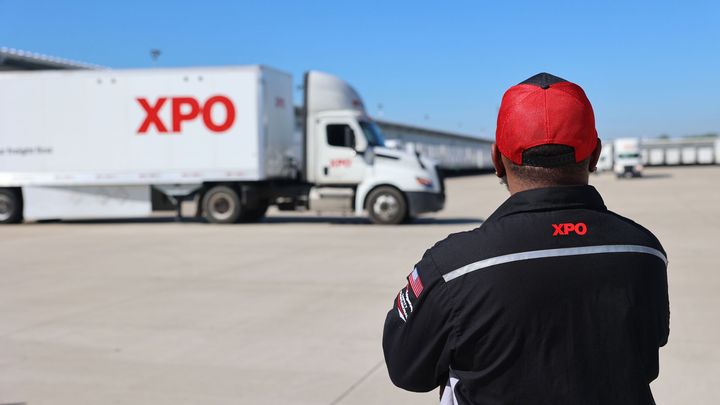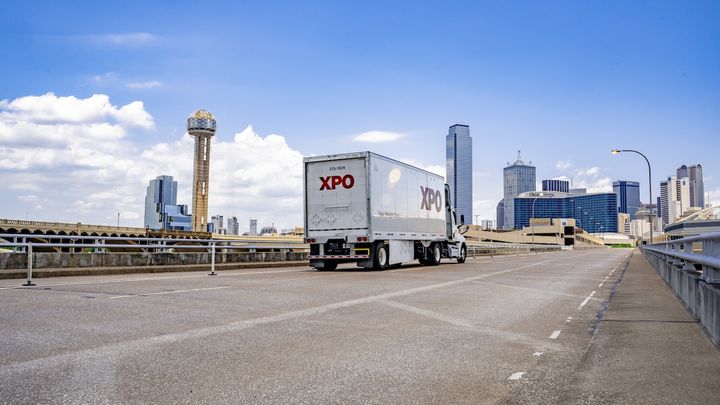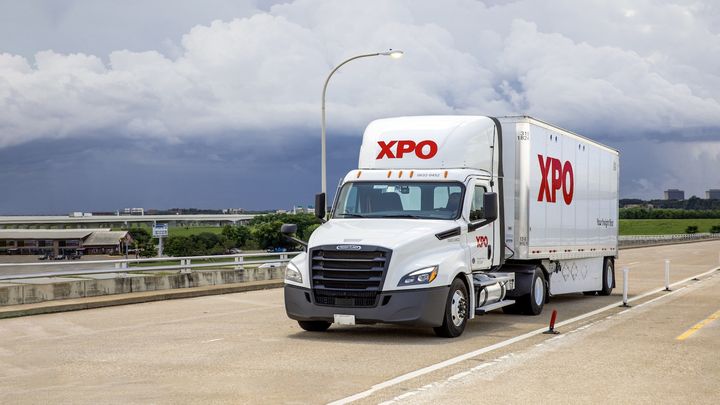Five Ways Last Mile Providers Can Decarbonize Their Operations
 Transportation providers are constantly striving to make their operations more sustainable, particularly with the increased need for last mile services from the pandemic. At XPO, we’re proud of the advances we’ve made in protecting our planet. It matters to us, and it matters to our stakeholders.
Transportation providers are constantly striving to make their operations more sustainable, particularly with the increased need for last mile services from the pandemic. At XPO, we’re proud of the advances we’ve made in protecting our planet. It matters to us, and it matters to our stakeholders.
We’ve trialed multiple ways to decarbonize our last mile operations – it’s an ongoing discussion in our teams, and I’d like to share some ideas for providers seeking to make their operations more environmentally friendly.
Here are five ways that last mile providers can decarbonize their operations:
- Let’s start with the most obvious – emissions!
In the US, 24% of transportation emissions come from medium to heavy duty vehicles – including the ones used in last mile deliveries – and worldwide, 14% of Greenhouse Gas emissions come from transportation. Changing some of your team’s behaviors in this area will have an impact on emissions.
To increase sustainability, last mile providers could consider alternative fuels when and where it makes sense, including their fleets and warehouse operations (on forklifts and yard switchers, for example). In the future, hydrogen may become a more readily available option for heavy duty vehicles.
Partnering with your clients on the best-fit solution will be critical. For example, XPO partnered with IKEA on planning and deployment of a last mile electric vehicle program in NYC. There will be many lessons learned, especially as you integrate your stakeholders and define solutions that make sense for your business model, your clients, and your providers. - Emissions…again. But not from trucks!
Is there a way to make your source of heating and cooling more efficient? If so, exploring it could have an important impact considering energy production accounts for 25% of Greenhouse Gas emissions.
There are multiple ways to make your facilities more energy efficient, such as LED lighting and motion activated lights. In 2020, we installed over seven million square feet of LED lighting. These lights consume a fraction of the power used by standard fixtures. To date, approximately 2,500 tons of CO2 equivalent have been saved by the use of LED lights. Our smart building systems manage energy-intense operations and feature motion activated lights and light sensors that dim if enough daylight is present.
If you’re in a place with incentives for renewable energy alternatives, partner with procurement and your utility provider to consider alternative energy sources, such as solar or wind. - Circular Mindset
Is there a way to position your inventory closer to your demand signal (such as the end consumer of the goods)? This reduces touches and transit moves – both add up to less carbon.
This practice is part of a circular mindset, which aims to eliminate waste and the continued use of resources. Smart solutions focus on an efficient placement of goods and a circular supply chain.
There are multiple ways to approach this: can you consolidate your returns into fewer, full truckloads? Can field destroy items be donated instead of placed in a dumpster? XPO partners with clients to re-consign merchandise within the local market where possible to avoid unnecessary freight shipments that add to the carbon footprint. - Waste (more circularity mindset!)
Recycling doesn’t have a direct impact on carbon emissions, but it’s still a net positive for the environment. If you start tracking your recycling percentage as a percentage of total waste, you will potentially see some opportunities to improve. XPO Last Mile recycled 40% of its tonnage in 2020. That’s a lot of plastic, Styrofoam, wood, metal, cardboard and mattresses that were kept out of landfills.
As a solution: can you condense your waste or recycling streams to take up less space in your dumpster? This will enable fewer pulls, less transportation and less carbon! - Start somewhere
The most critical piece to this entire formula is getting started – just take action!
Many states and municipalities have regulations or incentives that make working towards zero emissions easier. 15 states and Washington DC have signed a joint agreement to phase out diesel-powered trucks by 2050 in favor of Zero Emission alternatives for medium and heavy-duty vehicles.
Some clients are requiring an environmentally sustainable approach from their partners. It’s important to embrace this request, openly discuss it, and try to find an agreeable middle ground. You may find that your success in accommodating a solution in this space will get you additional business from like-minded clients.
For more information on what XPO is doing to become more sustainable, check out our annual sustainability report. For help with your Last Mile operations, contact us.


